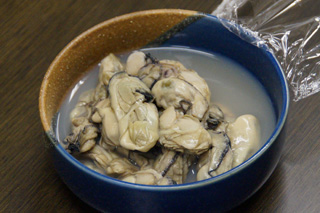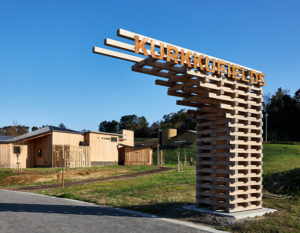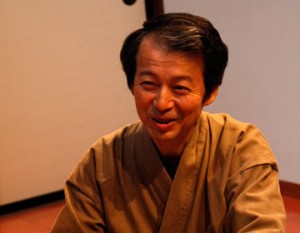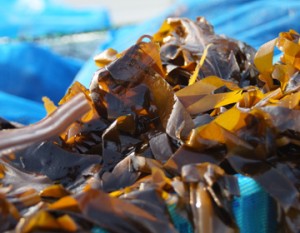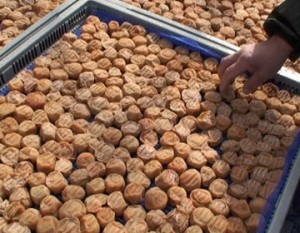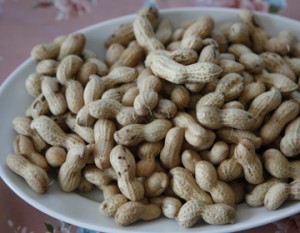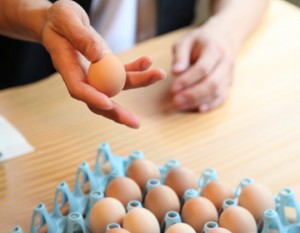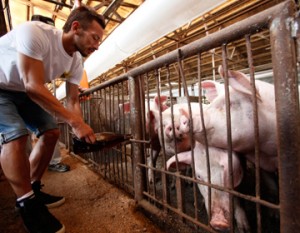The sea where baby oysters grow
Oysters are the fruit of the Sea of Sanriku. And Mangokuura in Ishinomaki-shi is the center of oyster production. We visited Suenaga Kaisan Co., Ltd. During our visit, we had visited Shin Hatakeyama in Kesennuma. The oysters he was cultivating were for shipping, the ones that are consumed in homes. Suenaga Kaisan also makes oysters for shipping as well as processed oysters, but most importantly, they cultivate ”seed oysters (baby oysters)”.
Seed oysters are babies of cultured oysters. There are only a few seas in the world where seed oysters are available. Mangokuura is one of them. The seed oysters grown in Mangokuura are shipped not only within Japan, but to France and the US where they are cultured.

What are seed oysters?
Can you imagine what seed oysters look like? We couldn’t, so we asked Kanji Suenaga president and representative director of Suenaga Kaisan.
First, about 50 scallop shells are attached to a rope. During the spawning season of oysters in July, the ropes are lowered into the sea so that the oyster eggs floating in the sea will stick to the scallop shells and begin to grow there. After about three months, they are thinned to leave only good oysters, and are lowered into the sea again to grow. Finally, the seed oysters are ready.
The seed oysters are then shipped to the oyster farmers, where the farmers will hang the oyster beds from the rafts in the sea allowing them to fully grow for shipping. For a detailed description of cultivation rafts, please refer to the article about Hatakeyama in Kesennuma. According to Hatakeyama, Suenaga Kaisan (水産ではなく海産のはず) is a master of seed oyster culture.
Cultivating seed oysters by using scallop shells to draw the floating oyster eggs. It definitely requires being in tune with nature.
”Oyster farmers, just like fishermen, don’t work according to the calendar, but the waxing and waning of the moon, the lunar calendar. Tides of the sea are important.”, said Suenaga.

Sanriku Coast was too blessed.
Suenaga told us an interesting story. The legend has it that the oysters of this area were brought by tortoises carrying them on their backs. The coastal area of Sanriku has been blessed with so much from the sea that such a legend was born.
”Sanriku is so rich in marine products. We can do anything. If we can’t succeed with oysters, we can try ”wakame” farming. If ”wakame” isn’t successful, then we can try ”hoya”. It doesn’t work like that in the other coastal areas of Miyagi. Either the waves are too rough, or the sea is too shallow. You cannot farm if the sea is too shallow. Sanriku has a deeply indented rias coastline, where the sea is deep and suitable for marine farming.” said Suenaga. ”But,” he continued,
”I think we were too blessed. Everything was easy. We could live off the blessings of the sea. We didn’t try to move ahead. When the fishing industry in general began to decline, we couldn’t keep up with it. That’s why we are now concentrating on food processing as well.”
The seed oysters of Mangokuura miraculously survived the devastating Great East Japan Earthquake in 2011.
One of his goals is to build a stable industry in addition to oyster farming. Suenaga was already on his way to his next challenge.

